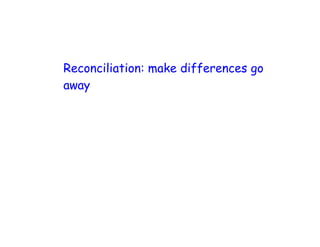March 18 Reconciliation
- 1. Reconciliation: make differences go away
- 2. To reconcile a bank statement you need to compare a transaction record to the bank’s statement in order to make sure there are no mistakes.
- 3. When reconciling you are finding transactions on the transaction record that are not on the bank statement, and also finding transactions on the bank statement that are not on the transaction record.
- 4. Once you have determined what the missing items are you account for them in the statement of reconciliation and the final balances should then match up.
- 5. Here is a statement the bank will send you at the end of the month
- 6. Here is the record kept by the person for the same month.
- 7. Most things are the same, as they should be.
- 8. But some things are different, why?
- 9. We use a statement of reconciliation to ensure no mistakes were made.
- 10. First step: all things that are the same.
- 11. Step 2: write in the final balance shown on both records. Our goal is to make them the same. 145. 51 199.15
- 12. Step 3: Add any deposits that are missing from the bank statement. 145. 51 199.15 87.00 232.51
- 13. Step 4: Subtract any cheques that the bank has not yet cashed. 145. 51 199.15 87.00 232.51 14.95 5.03 4.95 17.93 42.86 42.86 189.65
- 14. Step 5: Subtract all withdrawals which are not shown on your record. 145. 51 199.15 87.00 9.50 232.51 14.95 5.03 4.95 17.93 42.86 42.86 189.65 189.65
- 16. If the final balances are the same then all is well. If they are not, some error has occurred. Maybe you made a mistake, maybe the bank did.















